Best Wood for Wood Stove: Keeping the Flame Alive
- July 27, 2023
- 0 comment
When winter winds start howling, a wood stove becomes a comforting ally against the cold. These stoves not only warm your space but add a traditional charm with their crackling flames. However, choosing the right type of wood is crucial—it impacts the heat efficiency, the burn duration, and even the stove’s condition. This article will explore the best woods for your stove, aiming to enhance your warmth and comfort through the colder months, efficiently and safely.
Best Wood for Wood-Burning Stove List:
Understanding Wood Burner Stoves
Before diving into wood types, let’s get a handle on what makes wood-burning stoves tick. These stoves are designed to burn not just wood but also biomass derivatives like pellets. They’re popular not only for heating rooms but also for cooking and water heating.
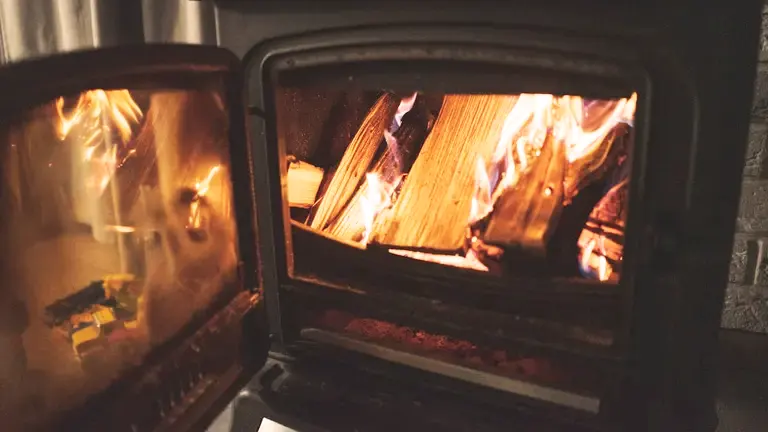
A stove’s performance hinges on its design and the wood’s moisture content. Seasoned wood, typically dried for over a year, burns the hottest and cleanest because it has less moisture. This makes it crucial to choose well-dried wood to maximize your stove’s efficiency and the quality of heat it produces.
1. Ash
Ash is often referred to as the ‘king of firewood‘, an accolade it earns through several standout qualities. Ash is characterized by its low moisture content, often around 20% to 30% even when freshly cut, which allows it to burn hotter and cleaner than many other types of wood. This quality makes ash a standout choice for use in stoves, as it reduces the likelihood of tar deposit build-up, which can affect the functionality of your stove over time.
Furthermore, the straight grain structure of ash makes it relatively easy to split, which can be a real time-saver when preparing your firewood. Even when green, ash can be burned relatively effectively, although the heat output is maximized when the wood is properly seasoned, reducing the moisture content further and allowing it to catch fire more readily. The high heat output and clean-burning qualities make ash an excellent choice for an efficient, warm fire.
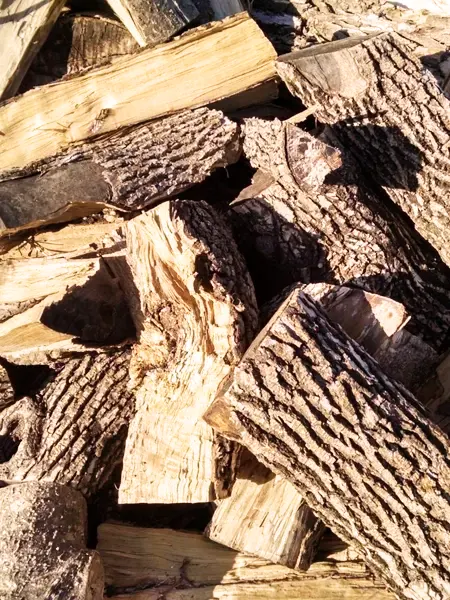
- Hardness: Ash is known for its excellent strength properties relative to its weight. It has a Janka hardness of around 1320.
- Workability: Ash is relatively easy to work with. It machines well, and it’s easy to glue and finish.
- Grain Pattern: Straight, regular grain with occasional wavy patterns. It has a light, nearly white color.
- Common Uses: Due to its shock resistance and strength, ash is used for tool handles, furniture, and sports equipment like baseball bats and hockey sticks.
Interested in Ash Wood? Dive into our fascinating guide to discover the wonders of this versatile wood. Read on for an enlightening exploration of its uses and benefits! Check it out Here!
2. Beech
Beechwood, like ash, is another excellent choice for wood-burning stoves. With a density similar to oak and maple, it provides a good heat output that can keep your home cozy for an extended period. The flame produced by beech wood is clean and bright, contributing to a pleasant ambiance that is as much a part of the charm of a wood-burning stove as the heat it provides.
However, the higher moisture content of beech wood means that it can take a long time to season, often up to a year or more. It’s crucial to ensure that beech wood is properly seasoned before burning it, as the high moisture content can lead to a smoky fire and potentially result in tar deposits in your stove and chimney.
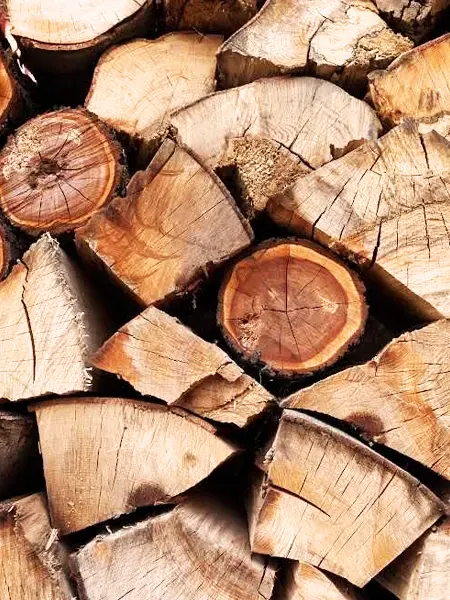
- Hardness: Beech is quite hard, with a Janka hardness of about 1300.
- Workability: Beech works fairly well, but it can dull tools due to its hardness. It responds well to steam-bending.
- Grain Pattern: Straight, fine, and uniform grain with a pale cream color, sometimes with a pink or brown hue.
- Common Uses: Commonly used in furniture, flooring, and a variety of turned objects.
Curious to unravel the world of Beech Wood? Dive into the captivating realm of this material. Explore our intriguing article for an enlightening journey
3. Oak
Oak is renowned for its hardness and density, properties that result in a slow, steady, and long-lasting burn when used as firewood. An oak fire tends to produce a small flame and emits a great deal of heat, making it an efficient choice for heating your home.
However, these same properties also mean that oak requires a longer seasoning time than many other woods, often up to two years, as it’s necessary to remove as much moisture as possible to allow the wood to burn effectively. But this is an investment of time that pays dividends. The heat output from well-seasoned oak is substantial, and the long burn time means less frequent refilling of your stove.

- Hardness: Oak is a hard and heavy wood, with a Janka hardness of around 1360 for red oak and 1620 for white oak.
- Workability: Oak is fairly easy to work with but has a moderate blunting effect on tools. It responds well to steam bending.
- Grain Pattern: Coarse and uneven texture, with a straight grain. It has a light to medium brown color.
- Common Uses: Used in high-quality furniture, flooring, barrels for wine and whiskey, and veneer production.
Curious to unravel the world of Oak Wood? Dive into the captivating realm of this material. Explore our intriguing article for an enlightening journey Here!
4. Birch
Birch is a great option for those looking for wood that burns hot and bright, albeit for a shorter period. Due to its relatively lower density compared to other hardwoods, birch logs burn faster and hotter, making it a fantastic choice for a quick burst of warmth.
However, this fast burn time also means you might have to refill your stove more frequently if you rely solely on birch. It’s often recommended to use birch in combination with slower-burning woods like oak or hickory to achieve a balance of heat output and burn time.
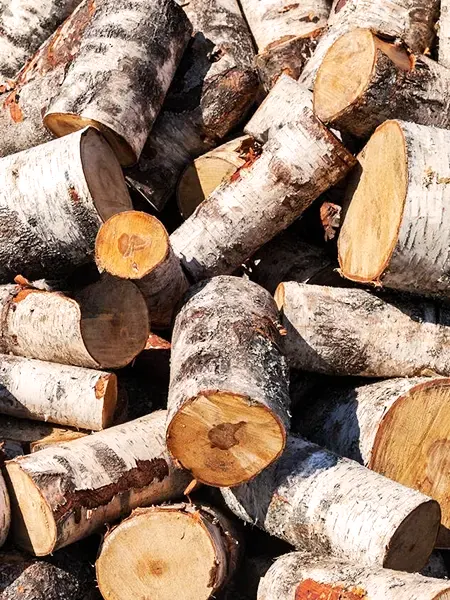
- Hardness: Birch is a medium-hard wood with a Janka hardness of about 1260.
- Workability: Birch is generally easy to work with. It turns, glues, and finishes well.
- Grain Pattern: Generally straight or slightly wavy, with a fine, even texture. The color can be light reddish-brown.
- Common Uses: Plywood, boxes, crates, turned objects, and interior trim.
Curious to unravel the world of Birch Wood? Dive into the captivating realm of this material. Explore our intriguing article for an enlightening journey Here!
5. Hickory
If it’s high heat you’re after, hickory should be on your shortlist. Known for its high energy content, hickory ranks among the best hardwoods for firewood. It provides a slow and hot burn, which can maintain a comfortable temperature in your home throughout a long winter night.
Hickory also tends to produce a larger, more lively flame than many other hardwoods, adding to the cozy ambiance of your home. Like oak, it requires proper seasoning to maximize its potential, but the high heat output and long burn time make it a worthwhile option for your wood-burning stove.
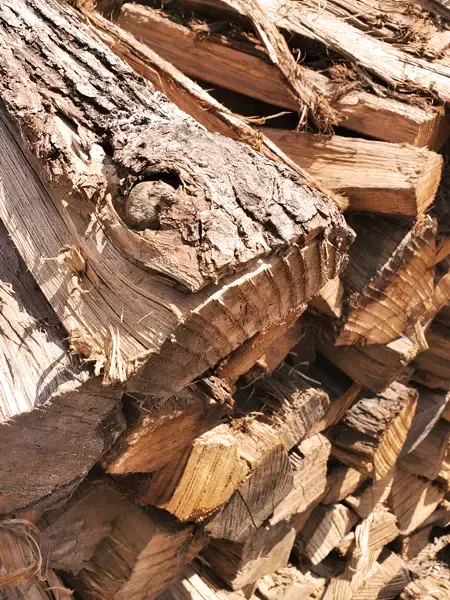
- Hardness: Hickory is one of the hardest domestic woods, with a Janka hardness of around 1820.
- Workability: Hickory is difficult to work with hand and machine tools, with a high chance of tearing or chipping. It does, however, stain and finish well.
- Grain Pattern: It’s generally straight-grained, but it can be wavy or irregular. It has a coarse texture, and the color varies from pale yellow to reddish-brown.
- Common Uses: Tool handles, ladder rungs, wheel spokes, and flooring. Due to its flavor, it’s also popular for smoking, curing, and barbecuing food.
Curious to unravel the world of Hickory Wood? Dive into the captivating realm of this material. Explore our intriguing article for an enlightening journey Here!
| Wood Type | Heat Output (BTUs*) | Burn Time | Ease of Splitting | Smoke and Pollutant Emissions |
|---|---|---|---|---|
| Ash | 24.2 million | Medium | Easy | Low |
| Beech | 27.5 million | Medium | Moderate | Moderate |
| Oak | 29.1 million | Long | Difficult | Low |
| Birch | 20.2 million | Short | Easy | Moderate |
| Hickory | 27.7 million | Long | Difficult | Low |
- Heat Output is measured in BTUs (British Thermal Units). This represents the amount of heat that is produced by burning a cord of wood. Higher BTU values indicate higher heat output.
- Burn Time represents how long a typical fire made from wood will last. This can be short, medium, or long.
- Ease of Splitting indicates how difficult it is to split the wood for firewood. This can be easy, moderate, or difficult. Woods that are easy to split will save you time and effort in preparation.
- Smoke and Pollutant Emissions represent the amount of smoke and other pollutants (like particulates or volatile organic compounds) that are released when the wood is burned. Lower emissions are generally better, both for the health of people who might inhale the smoke and for the health of your stove and chimney, which can be damaged by too much soot or creosote.
Not All Woods are Created Equal
While the woods mentioned above rank among the best for use in a wood-burning stove, some should be avoided. Softwoods such as pine, fir, or spruce, though they catch fire quickly, tend to burn at lower temperatures and provide less heat.
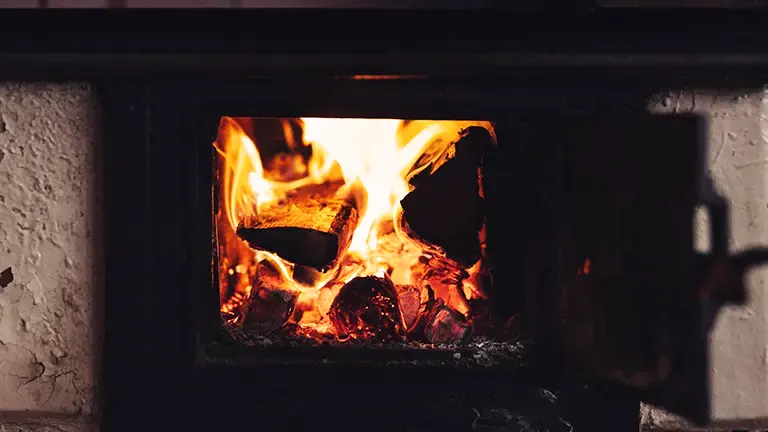
More importantly, these softwoods contain high levels of resin which can lead to a buildup of creosote in your stove and chimney. This buildup increases the risk of chimney fires. Other types of wood like poplar, willow, or chestnut also fall short as they don’t burn as hot or as long and produce an excessive amount of smoke.
The Sustainability Factor
When it comes to choosing the best wood for burning, sustainability should be part of the conversation. As responsible inhabitants of our planet, it’s crucial that we source our wood responsibly.
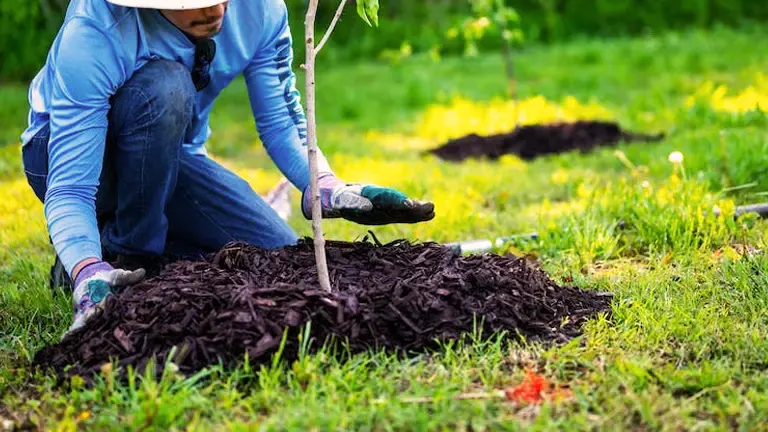
This could mean purchasing from suppliers that guarantee their wood is sustainably sourced. Or, if you have the land and means, consider planting your own trees to replace those cut down for firewood.
Burning Smart: Maximizing Efficiency
Simply using the right wood in your wood-burning stove is just one part of the equation. The stove must also be operated correctly to maximize efficiency and safety. Ensure there’s adequate ventilation, properly maintain the stove and chimney, and never leave the stove unattended while it’s burning.
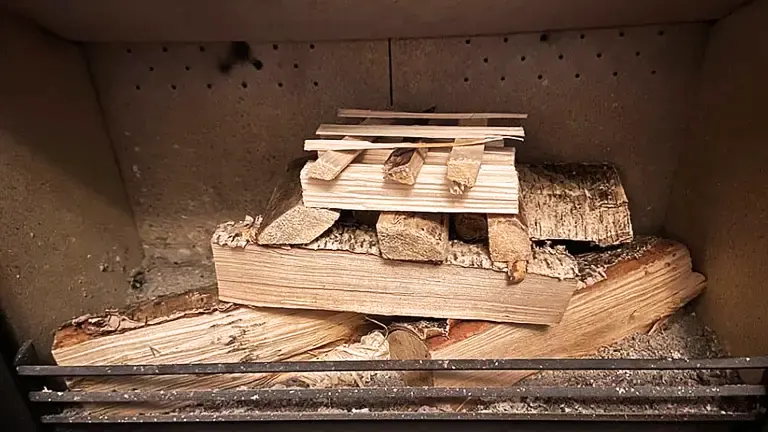
Furthermore, how you arrange the wood in your stove can affect its performance. For instance, a method known as “upside-down” fire-building—where large logs are placed at the bottom with smaller ones and kindling on top—creates a longer, more even burn.
Ensure Your Wood is Properly Dried
It’s essential to never burn “green” or inadequately dried wood, as this results in reduced heat output and increased smoke production, ultimately leading to creosote buildup. To store wood effectively, arrange it in a stack that allows for efficient air circulation, ensuring the top is covered. Before burning, verify that the wood is completely dry. A helpful guideline is to prioritize burning older, drier wood first, to prevent wood rot and wastage.
For optimal burning, wood should contain less than 20 percent moisture. Wood with moisture content above 20 percent is challenging to ignite, burns inefficiently, emits excessive water vapor and smoke, and contributes to poor indoor air quality.
Types of Wood to Avoid
While using salvaged firewood or scraps can be cost-effective for home heating, it’s important to steer clear of specific wood types and materials due to health and safety concerns. Many of these materials can produce harmful indoor fumes and environmentally problematic chimney emissions. Some also pose risks to stove components and contribute to hazardous creosote buildup in chimneys.
To ensure safety, refrain from burning:
- Painted or varnished wood, trim, or related by-products
- Pressure-treated lumber
- Driftwood
- Engineered sheet goods like plywood, particleboard, and MDF
- Hardboard or other compressed paper products
- For those with allergies, exercise caution with aromatic cedar and certain other woods.
Safety Measures for Wood Burning
When tending to your wood stove, exercise care and practical judgment. While a small amount of paper is necessary to ignite the stove, excessive use can contribute to creosote accumulation. Prioritize safety when operating any wood-burning appliance. Adhere to recommended clearance guidelines, shield the floor with a fire-resistant pad, and install active carbon monoxide alarms and functioning smoke detectors in your home.
Conclusion
The right choice of wood for your wood-burning stove can dramatically enhance the warmth and atmosphere of your home, especially during colder months. It’s not only about providing heat—it’s about maintaining the longevity of your stove, the quality of your indoor air, and the preservation of our forests. Choose wisely, burn responsibly, and savor the warm, mesmerizing glow of the fire that makes every winter moment a memory.
FAQs
- What is the fastest way to season wood for a stove?
Seasoning involves cutting the wood to the right size, splitting it, and storing it in a place where air can circulate around it. The fastest way to season wood is to stack it in a sunny, breezy location, ideally before late spring, so it has the full summer to dry out. - How can I tell if my wood is adequately seasoned?
Well-seasoned wood generally has darker ends with cracks or splits visible, it’s lighter in weight and makes a clear “clink” rather than a dull “thud” when two pieces are struck together. Another indicator is if the bark comes off easily. - Can I burn fresh-cut, greenwood on my stove?
While it’s possible to burn green wood, it’s not advisable. Greenwood has a high moisture content, which makes it burn inefficiently and produce a lot of smoke. Over time, this can lead to a buildup of creosote, a flammable substance, in your chimney, which increases the risk of a chimney fire. - Why is Ash considered the ‘king of firewood’?
Ash has a low moisture content, even when freshly cut, which allows it to burn hot and cleanly. It’s easy to split due to its straight grain structure, and it’s one of the few woods that can be burned while still green (although it burns best when seasoned). - I’ve heard that oak takes a long time to season. Why is that?
Oak is a dense hardwood, which means it retains a high amount of moisture. This density makes it excellent for burning because it provides a slow, steady, and hot burn, but it also means it takes longer for the moisture to evaporate—up to two years for maximum efficiency. - Is it better to use a mix of different woods on my stove?
Using a mix of woods can be beneficial. Faster-burning woods like birch can be used to quickly heat the stove while slower-burning woods like oak or hickory can keep the fire going for a longer period. This combination can help you control the heat output and burn duration more effectively. - How does burning wood contribute to sustainability?
When sourced responsibly, wood is a renewable source of energy. Some suppliers ensure their wood comes from sustainable sources, and you can also consider planting your own trees for firewood. Remember, the cycle of growing trees absorbing CO2 and the subsequent release of CO2 when the wood is burned is a carbon-neutral process. - Can I use any type of wood on my stove?
While technically any wood can be burned, not all woods are ideal for a stove. Some woods, like pine or spruce, burn at lower temperatures and produce less heat. Additionally, they contain high levels of resin, which can lead to a buildup of creosote in your stove and chimney. For the best heat output and longevity of your stove, hardwoods like ash, oak, or hickory are recommended.
We’d love to hear from you! Share your experiences and opinions on the best wood for your wood stove in the comments below. Your insights could help others make smart choices for warm, efficient fires this winter!






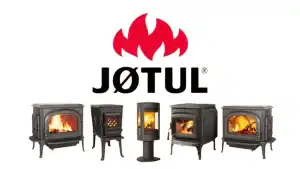

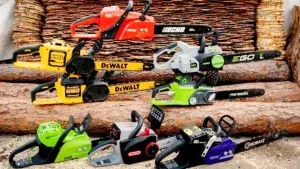





Leave your comment